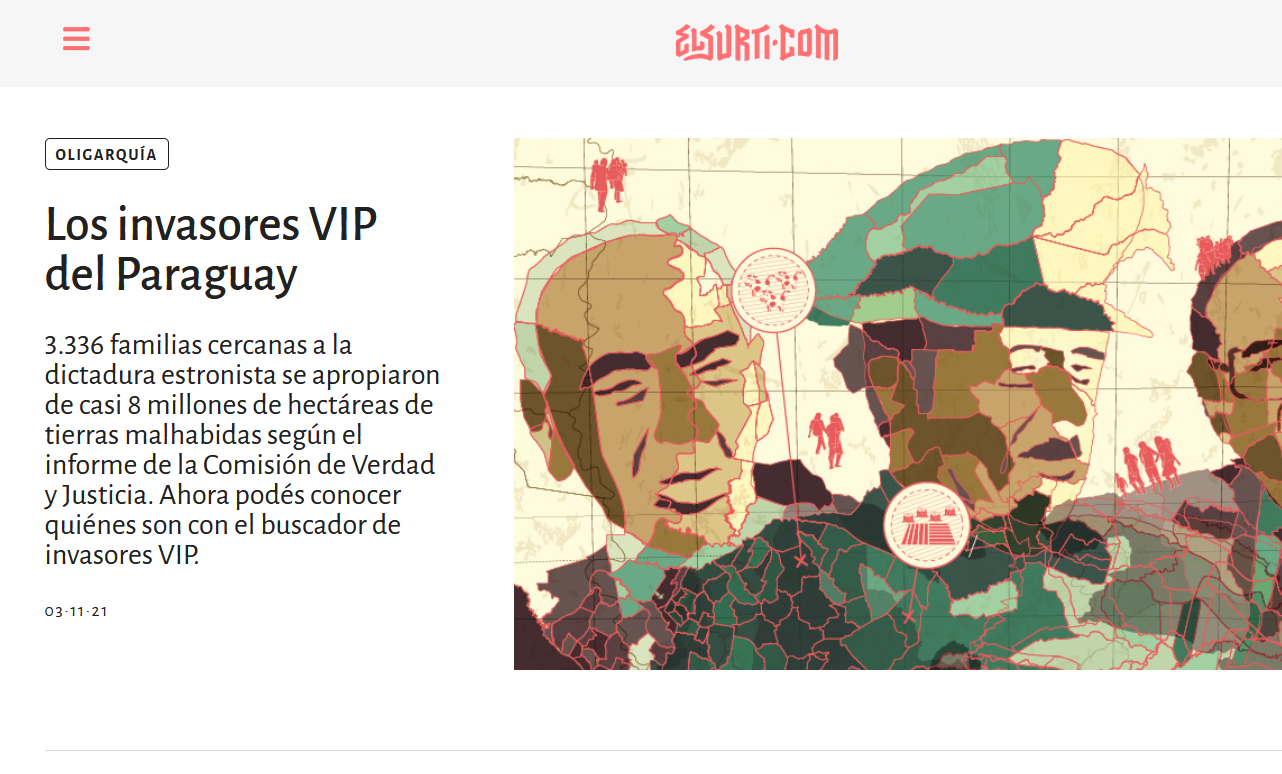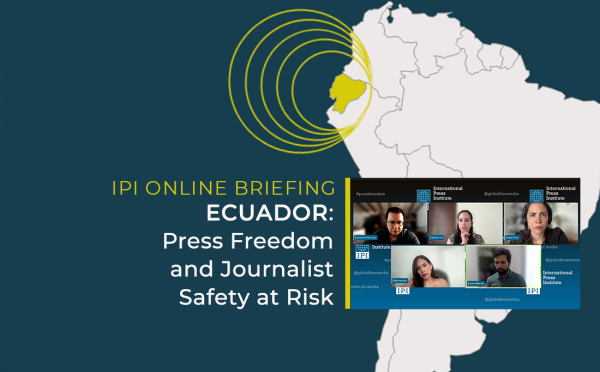Local Journalism Project Case Study: El Surtidor (Paraguay)
The backstory:
El Surtidor (also called El Surti) was born in 2016 as a Facebook page founded by a group of journalists and designers to become a benchmark for visual journalism in Latin America. Paraguay has one of the most unequal land distributions in the world, which is also reflected in high media concentration. El Surti fills a gap in the region by using graphic elements to tell critical stories affecting communities, from climate change to drug use to COVID. El Surti received the Peter Benenson Award for Journalism Committed to Human Rights in 2016 from Amnesty International Paraguay and the Gabriel García Márquez Journalism Award in 2018 in the Innovation category. The media company was among the 10 startups selected by the accelerator Velocidad to receive direct investment and consulting through the program, and was one of the six to move on to the second phase of the project.
Audience:
They are oriented to an under-30 audience, which is a product of a demographic boom in Paraguay. El Surti says that every week they reach 200,000 people. Additionally, 10,000 subscribers listen to their podcast, which is distributed once a week through WhatsApp, where El Surti has a very loyal audience network.
Value proposition:
El Surti bets on the power of visual journalism, format innovation and community building to break into the country’s public debate. El Surti’s poster-style pieces, which synthesize information graphically, have the effect of attracting readers’ curiosity about a topic.
Product and distribution:
El Surti’s main news products are distributed through JPGs of 800 pixels. They’ve since expanded to other formats: scrolling, animated videos, longer reports, data journalism, timelines, magazines, fanzines, exhibitions in public spaces, and exhibitions in museums. El Surti also distributes content through its website and social media networks such as Facebook, Instagram, Twitter, and WhatsApp. The latter is now their main distribution channel, where their “hard core” users are. They generate monthly meetings in the chat Discord. In 2019 they implemented “La Precisa”, a fact-checking section, and continue to sustain it through international alliances. El Surtidor’s podcast is distributed every week via WhatsApp and also through a network of local radios throughout the country.
The team:
El Surti is an association of communications workers and functions similarly to an NGO in Paraguay. They started as a team of three: a designer, a writer, and an illustrator, and are now 19 people in total.
Business model:
El Surtidor is today an organization divided into three units: media (El Surtidor and La Precisa), training (Latinográficas, 5 percent of annual income), and consulting service La Fábrica Memética (projects with institutions and visual communication consultancy). The latter provides 30 percent of their income. It is in these three areas that they have found sustainability. Futuros, an annual print magazine with El Surtidor’s best stories on the climate crisis, generates around 2 percent of income.
The challenge:
“That the algorithms don’t become our editors”
The future:
Combine the magazine, the events, and finally launch their membership program that was abruptly halted by COVID.
Ask them about:
An intent to pivot to video did not work because of poor internet connection in the country, so they developed “surtiscroll”, a vertically scrolling “scrollytelling” format that uses features of information posters, explainer videos, long-form and Japanese Kamishibai stories. It is HTML-based, consumes very little data and works on low-quality connections. The lesson is: before developing products, be sure that they can be properly consumed by users.
In their words:
“We work with a public that is suffering the consequences of the climate crisis.”
“We did not see our generation’s problems reflected in the traditional media, neither in topics nor in forms. And there we saw an opportunity, in the greater access to mobile content and mobile internet and specifically social networks such as Facebook.”
“Visual storytelling is a very powerful way to mitigate the infodemic, enhance the impact of journalistic work, and deepen interaction with new audiences and community management.”
“We are always testing, doing, discarding or escalating according to the results we receive. This model has its advantages and disadvantages, but the advantage is that it allows us to be dynamic, so our products are always changing.”
About growth: “The first stage was the hardcore fans, they were the first followers, then it was the local organizations and in a third instance it was the international organizations that are investing in independent journalism.”
About the audience: “A characteristic of our country is the weak social fabric that exists in general. Our audience falls into two categories: youth, organized, and unorganized. One of our goals is to get people to organize. Understand that collective action is like a response to our reality.”
“We had prepared our membership plan. Then came the quarantine. The first people who were left without work in the quarantine were our generation, precarious people. It was not a time to ask for money, it was the other way around. It was an audience that needed help.”
“Listen to the specific problems of our audience. Do journalism on those specific problems, make available what is needed to change the status quo. This is what we want to achieve, what we seek to do with each piece.”
About sustainability: “Sustainability and independence is a daily construction. One is never completely independent and never completely sustainable.”
“I am optimistic in the sense that good journalism has more channels than ever to get through. If there is good journalism, if that journalism serves a community, without a doubt it will find the TikTok, the tweet, the web, the fanzine, the play, whatever it takes to reach more (people).”
Source for information and views in this case study: Interview with El Surti co-founder Alejandro Vazquez.
This story is part of IPI’s Local Journalism Project. The publication of these case studies – part of IPI’s wider work mapping, networking and supporting quality innovative media serving local communities – is supported by the Friedrich Naumann Foundation.



